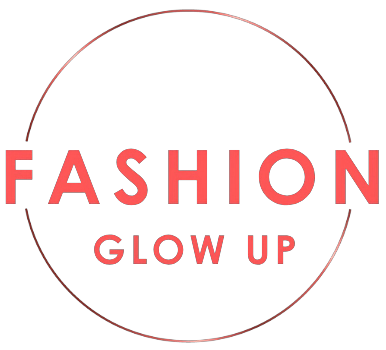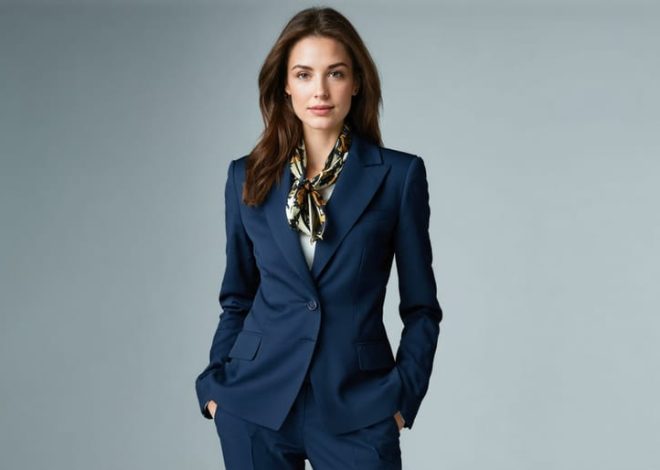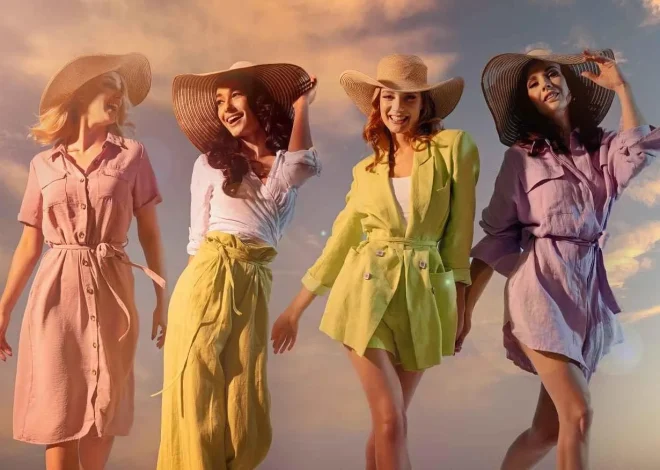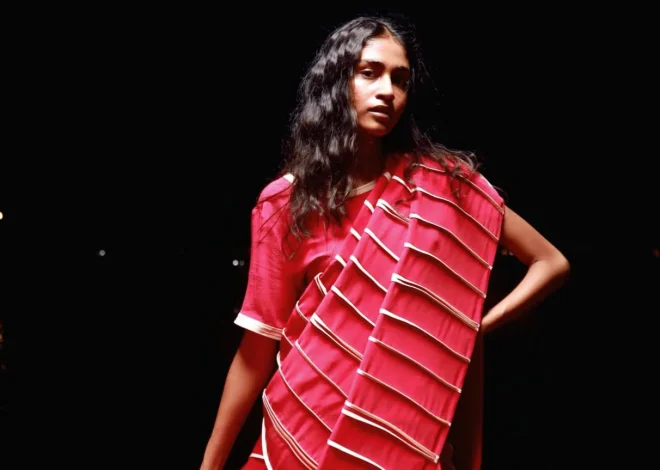Scented Like a Snack, Sold Like a Status Symbol: The Foodification of Beauty
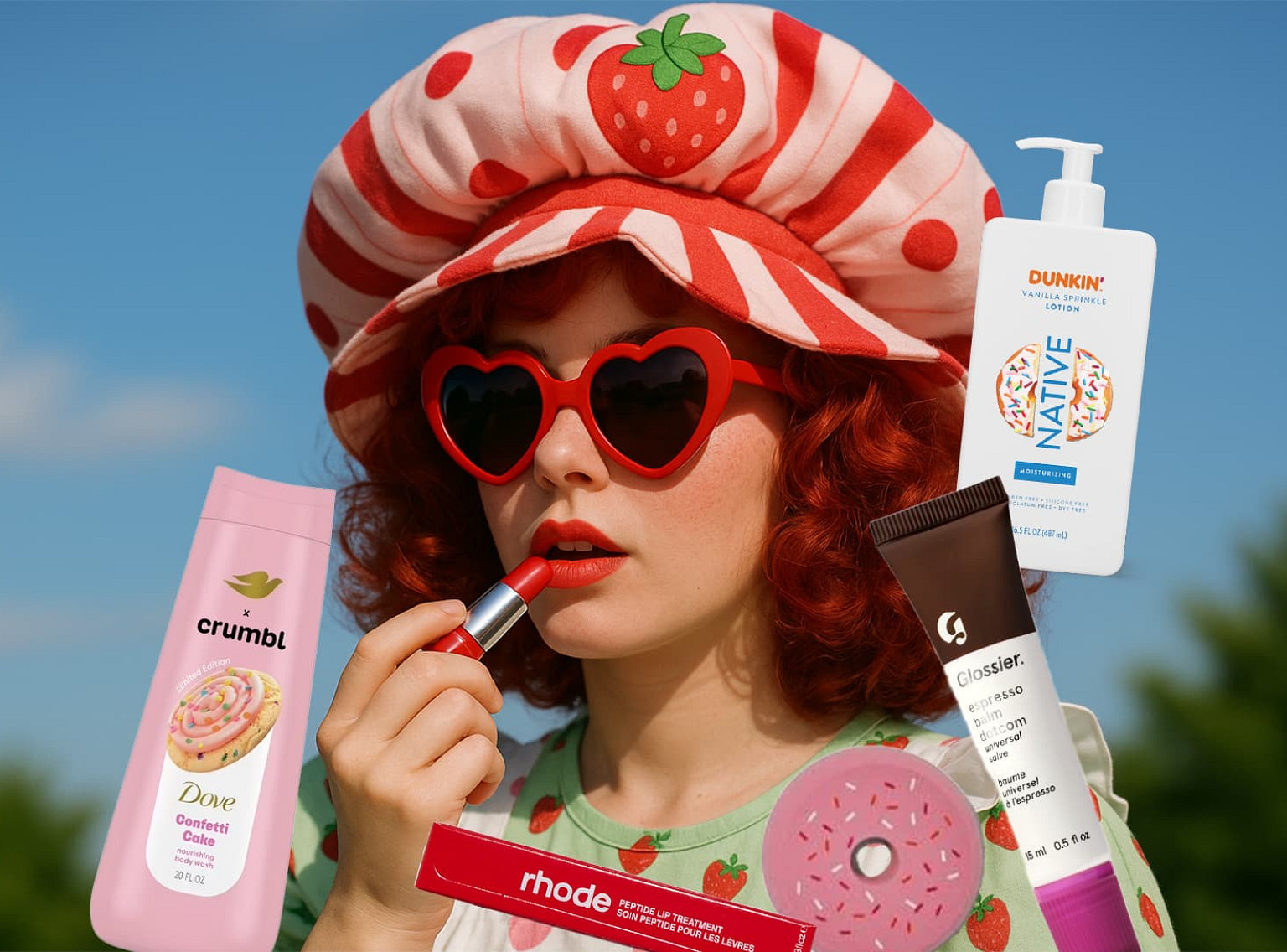
In an industry where storytelling is as vital as science, food has emerged as the key element that fosters genuine consumer engagement. By evoking both literal taste and fashionable appeal, food-infused beauty products create emotional bonds, nostalgia, and even social prestige.
What started in the 1990s with Lip Smacker’s Cotton Candy trend has since transformed into a full-blown cultural phenomenon, fueled by social media. Beauty enthusiasts now chase trends like “glazed donut skin” (which has garnered over 1.5 billion views on TikTok), gourmand-inspired dessert scents (with a +182.1% surge in searches on social platforms, according to Spate), and “strawberry girl makeup” (propelled by a TikTok tutorial amassing 45.1 million views). In response, beauty brands are crafting products, collaborations, and campaigns that mimic the look, scent, and feel of indulgent snacks and drinks, with a particular emphasis on sweet treats.
Why Now? Understanding Society’s Sweet Spot
Jessica DeFino, a beauty critic and cultural commentator, links the rise of food-inspired beauty to the anti-diet culture movement that gained traction in the mid-2010s. She explained to BeautyMatter that this shift curtailed traditional beauty standards, pushing the industry away from promoting weight loss toward focusing on flawless skin through curated skincare routines. While the idea of “all bodies are good bodies” gained attention, it was somewhat offset by a new pressure that “no skin is perfect skin” yet. This paved the way for food-related skincare trends like “glazed donut skin” and “Jello skin.”
With the 2024 boom of GLP-1 weight-loss drugs, beauty was already positioned as an alternative form of indulgence without actual eating. Studies showing reduced consumption of sweet baked goods among GLP-1 users coincided with beauty-food collaborations like Dove x Crumbl and e.l.f x Dunkin’, offering weight-conscious consumers ways to enjoy treat-inspired products while maintaining diet goals.
DeFino also suggests this trend reflects broader economic realities, noting inflation and rising grocery costs in the West. She argues that as food becomes a luxury, food-themed beauty items may emerge as status symbols.
The Psychology Behind the Trend: From Fridge to Face
Food’s power extends beyond nutrition to emotional comfort, which explains why beauty products inspired by edible ingredients resonate deeply amid uncertain times. Engaging all five senses—through visual storytelling, packaging, scent, texture, and color—brands create immersive experiences that strengthen consumer connections.
Michelle Kwak, Director of Integrated Communications at Laneige US, shared with BeautyMatter how their Glaze Craze Tinted Lip Serum, inspired by freshly baked donuts and featuring a donut-shaped applicator, succeeded largely due to sensorial marketing. The campaign, which included a pop-up donut van in NYC, generated unprecedented social media engagement and millions of additional video views compared to competitors.
Visual storytelling, as Juan Campdera, CEO of Aktiva, highlights, is essential for activating trust, memory, and reward centers in the brain, turning products into memorable experiences. Similarly, scent played a crucial role in the success of Glaze Craze, with dessert-like aromas such as Strawberry Sprinkles and Cinnamon Sugar triggering emotional memories linked to familiarity and comfort.
Other brands like Glossier expanded this sensory approach through compelling visuals and collaborations with food artisans, allowing consumers to mentally engage multiple senses even without holding the product. Their Black Cherry and Espresso Balm Dotcom campaigns incorporated textures, flavors, and ASMR sounds to create richly layered sensory experiences.
Craving Collaborations: The Power of Familiar Flavors
The fusion of food and beauty gains even greater traction when paired with recognizable food brands, tapping into consumers’ emotional connections. Collaborations like Hailey Bieber’s Strawberry Glaze Lip Peptide with Krispy Kreme sparked massive social media engagement, while Native’s partnerships with Dunkin’ Donuts and Jarritos illustrate how familiar flavors can be innovatively integrated into beauty products.
Native’s exploration of the Boston Kreme scent for deodorant showed surprising consumer acceptance, demonstrating openness to familiar tastes in novel formats. The Jarritos collaboration inspired vibrant packaging that reflects the beverage’s colorful identity, encouraging consumers to showcase these products proudly as status symbols.
Such partnerships enable beauty brands to break traditional product boundaries and reach new audiences. Erewhon, a cult-favorite organic grocer in Los Angeles, serves as a launchpad for beauty-beverage collaborations that merge function, flavor, and social media appeal.
Australian haircare brand BondiBoost extended its wellness ethos by teaming with Two Hands café to create a minty matcha drink echoing their scalp rinse, bridging lifestyle and beauty in a way that connects with younger, wellness-focused consumers.
Snackable Content: Food-Beauty’s Role in Broader Trends
Incorporating food into beauty also lets brands tap into popular cultural trends beyond cosmetics. For example, eos Products embraced Gen Z’s enthusiasm for personalized “secret menu” hacks by encouraging fans to layer limited-edition lip balm flavors, creating a community-driven, creative experience.
Glow Recipe, known for its food-inspired skincare, strengthens its connection with consumers through behind-the-scenes content showcasing natural ingredients like watermelon, enhancing authenticity and engagement.
The Rise of Edible Ingredients: From Pantry to Product
The food-beauty crossover is not merely aesthetic; it is functional. Pantry staples like milk, rice, and watermelon are becoming star ingredients, reflecting a philosophy that skincare should be as thoughtfully curated as diet. Angela Taylor of Elemis emphasizes this growing trend rooted in cultural wisdom and clinical effectiveness.
Glow Recipe’s Christine Chang credits K-beauty’s holistic approach for popularizing edible ingredients globally, with formulations featuring fermented rice water, ginseng, and honey gaining widespread acclaim. Glow Recipe’s strong market presence at Sephora underscores this success.
Kate McLeod, co-founder of a food-inspired bodycare brand, draws from her pastry chef background to craft nourishing, food-grade skincare that appeals to consumers seeking transparency and ritualistic pleasure. Her brand’s chocolate box-inspired packaging reinforces a luxurious sensory experience, reflected in soaring holiday sales.
Even established brands like Elemis embrace edible influences, with products like their Pro-Collagen Black Cherry Cleansing Balm delivering rich aromas that offer emotional comfort during daily routines.
Looking Ahead: The Future of Food and Beauty
Food’s integration into beauty has evolved into a sophisticated storytelling and sensory strategy, allowing consumers to indulge emotionally and culturally without compromise. This trend harnesses our natural human instincts—comfort, memory, desire—while adapting to wellness priorities, economic realities, and digital branding.
The future promises continued innovation through limited editions and long-term formulations, with success favoring brands that combine transparency, cultural relevance, and sensory delight to remain resonant in an increasingly savvy, community-driven market.
